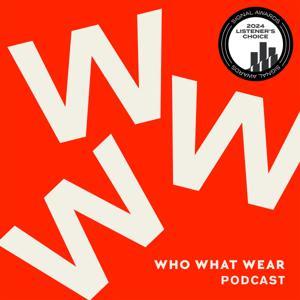Amber Valletta grew up in Tulsa, Oklahoma, spending time on her grandparents’ farm. Her childhood was defined by open fields, a freshwater creek and a simple rule from her mother: go outside and use your imagination.
At 15, a local modelling class set her on an unexpected path that would take her first to Milan, and then around the world. Within a few years, Amber became one of the defining faces of 1990s fashion — the Tom Ford Gucci era, the great editorials and the campaigns that shaped a generation’s idea of beauty.
But by her mid-20s, success had taken its toll. Amber stepped away from modelling, got sober, became a mother, pursued acting and found purpose in environmental advocacy. Today, as a United Nations Environment Programme goodwill ambassador, she’s using her influence to push for real change on climate, biodiversity and pollution.
“I don’t make my life all about me,” she told me. “I make it about other people too — about connection and love. When you have that, life is so much more enjoyable.”
This week on The BoF Podcast, BoF founder Imran Amed sits down with Amber Valletta to trace her journey from Tulsa to the world’s fashion capitals, how sobriety transformed her life at 25 and why she believes fashion must finally take responsibility for its impact on the planet.
Key Insights:
- Valletta’s childhood in nature forged a creative compass and the ability to adapt anywhere.That self-reliance became a career asset when she landed in Europe as a teenager: “I have this strange thing that I’ve always had — it’s like wherever you plant me, I grow. I’m like a weed or something, like an Oklahoma weed.” Those early years also taught her to observe and self-teach: “No one taught me. I just started figuring it out … you look, you watch, you listen.”
- Opening Tom Ford’s Gucci Fall/Winter 1995 show gave Valletta a once-in-a-career jolt. “When I walked out on the runway, it was probably one of the few times I’ve had that adrenaline rush … that spotlight came on and boom,” Valletta recalls. The moment was so impactful because it diverged from what dominated the time: “Nothing looked like that … it was like a shot of adrenaline for everybody,” she says.
- Valletta was recently named UN Environment Programme goodwill ambassador, where she is focused on climate change, biodiversity loss and on “fashion’s role as one of the biggest polluters.” The brief is practical: “We need to invest in innovation and investment in decarbonisation … We need all hands on deck. We need collaboration,” she says, warning, “If it doesn’t change, we’re going to implode on ourselves.”
- Valletta’s guidance for a fulfilling life is simple: “Do what you love. Serve a higher purpose. Enjoy the moment. Enjoy where you’re at.” She couples that with practical habits for staying power. “I ask questions, I show up with a lot of gratitude … I try not to do too much so that when I show up to work, I’m fully present for everybody.”
Additional Resources:
- Amber Valletta | BoF 500 | The People Shaping the Global Fashion Industry
- Can Fashion Still Meet Its Climate Promises? | BoF
Hosted on Acast. See acast.com/privacy for more information.





































